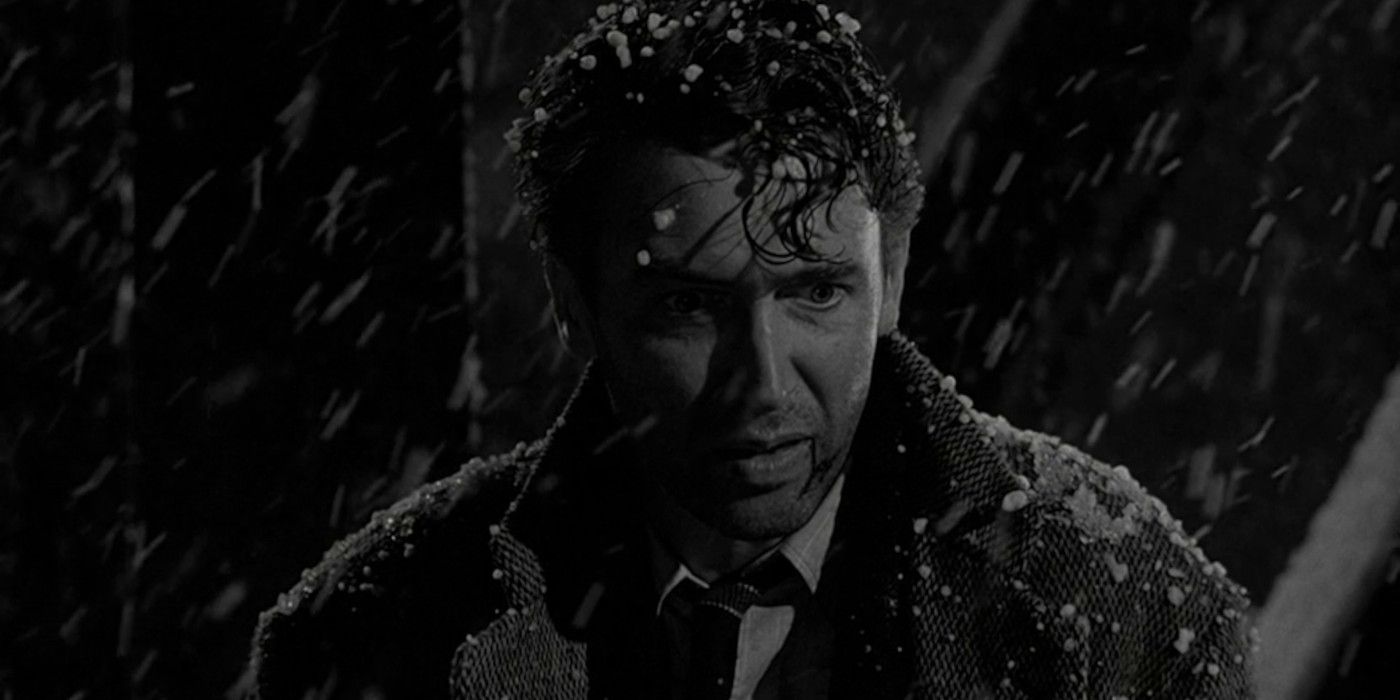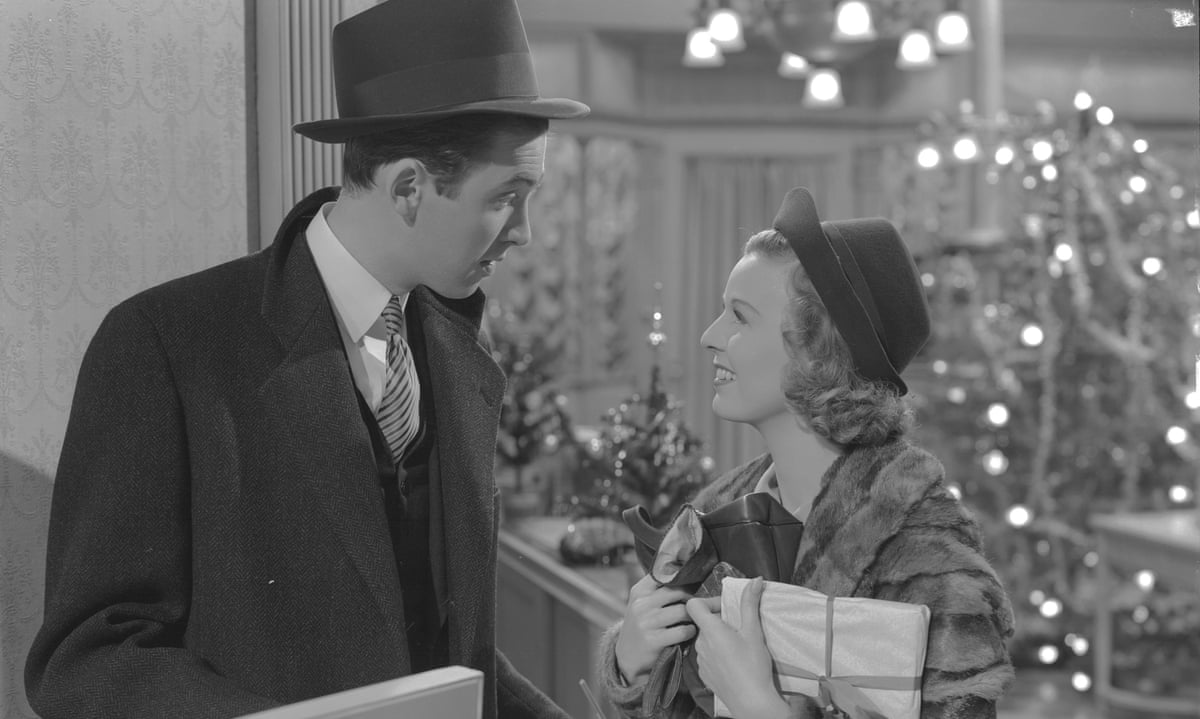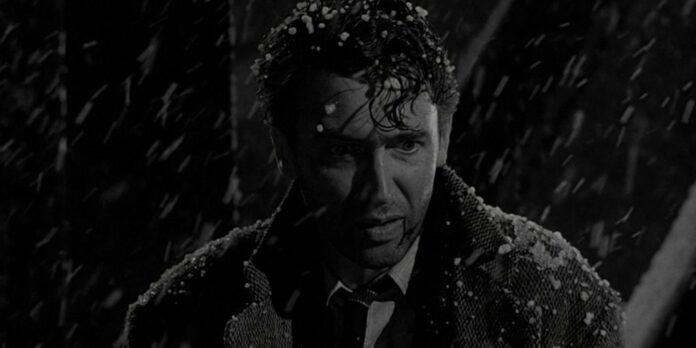This film features in every Christmas pub quiz and almost always ranks top on lists of the best Christmas films. Despite having been released nearly 80 years ago (yes, that is correct), this beloved film remains a household favourite and I truly do not understand why.
I am of course talking about It’s a Wonderful Life (1946). Perhaps it’s because I didn’t grow up watching this film every year therefore nostalgia is not an influential factor for me. Many of us love films for their nostalgic value, not necessarily because they are good films. I presume this has to be the case for It’s a Wonderful Life, because I fail to fathom how this film can be so beloved and widely renowned otherwise.
A major reason why this film is a hugely overrated Christmas film is the fact that Christmas themes and visuals are largely absent from the film until the final 30 minutes or so. Given that the first 90 minutes are centered instead around the life of the failing small-town businessman George Bailey, played by James Stewart, and his inability to escape his sense of duty towards his hometown community, and that Christmas spirit and celebration is only really indicated at the film’s happy conclusion, I find it surprising that it can be considered a Christmas film at all – let alone the greatest Christmas film of all time.
The majority of It’s a Wonderful Life is about mundanity, unfulfilled dreams and the burden of family business. George Bailey is a victim of all three. Which does set him up as a classic Christmas protagonist – a Scrooge-like character who needs reminding that love and kindness are the key to happiness. But the way the film goes about portraying this valuable message is so tedious and conservative heavily that its joyful sentiment loses its way. George, subsequent to the 90 minute ‘summary’ of his entire life thus far, reaches his breaking point and at this moment of suicidal desperation an angel swoops down to earth to rescue George and remind him how valuable he is to those around him. By the end of the film George does realize how lucky he is to have loving friends and family around him and he learns that they are what makes life worth living, not materialistic things like money.
This lesson of self-worth and the importance of giving back to others is of course important and is exactly the right sentiment an audience expects over the festive season. However, the core message It’s a Wonderful Life seems to send is that we should value these things at the expense of our own happiness and dreams.

That is not to say that George is unhappy by the end – his heartfelt reunion with his wife Mary and their four children would suggest otherwise. But remember the life he made for himself in Bedford Falls did come at the expense of his own aspirations to travel the world and build ‘skyscrapers a hundred stores high’! The film celebrates the repression of individualism and adventurism in favour of suburban mundanity and the fulfilment of conservative Christian expectations.
The film’s contemporary audience didn’t seem particularly enthralled by the sentiment of It’s A Wonderful Life either, as the film was a box office flop in 1946. Living in recent post-war society, and the immeasurable grief and loss that came with it, its hardly surprising that they found a film about staying at home and giving up on one’s hopes and dreams of changing or bettering the world to be so uninspiring or uplifting after such tumultuous times.
Director Frank Capra did succeed in creating a very human story, that attempted to appeal to the realism of ordinary people’s lives, but simultaneously diminished their aspirations to leave the small town life for the buzz of city life. Teaching them that apparently the morally right thing to do is to remain amongst similarly bitter, small-minded people trapped in their own unfulfilled lives rather than venture out to seek culture and conversation elsewhere. It is pretty ironic that the neon lights of Pottersville, the alternate version of Bedford Falls, make it look like a far more thrilling and inviting town than the bare, strained reality of Bedford Falls; and I say this as a deeply introverted girl who rarely entertains city nightlife. I don’t know about you, but I would far rather have a fun night in Pottersville than an eternity of averageness in Bedford Falls.
The best thing It’s a Wonderful Life has going for it is James Stewart. Charming, funny and a captivating film star lead, Stewart does a stellar job playing George Bailey, which is why I’ll conclude by recommending a lesser known festive film which he also stars in, and which I think is miles better than It’s a Wonderful Life. Released in 1940 and directed by Ernst Lubitsch, The Shop Around the Corner is a hilarious, heartwarming romantic comedy centered on a simplistic but deeply charming ‘enemies-to-lovers’ romantic between two shopworkers in Budapest played by Stewart and Margaret Sullavan. Both actors are wonderful in this witty and believably sentimental film, but Stewart truly shines, advocating his talents as both a dramatic and comedic Hollywood star.

Perhaps it is time people replace their annual rewatch of It’s a Wonderful Life with The Shop Around the Corner, a far better, more Christmassy film (with a much more reasonable run-time), and in doing so recognize that even if it holds nostalgic value, It’s a Wonderful Life is not a great film, its not even a good film.
Wendell Jamieson said it best in a 2008 The New York Times article, It’s a Wonderful Life “is a terrifying, asphyxiating story about growing up and relinquishing your dreams […]. It is a story of being trapped, of compromising, of watching others move ahead and away, of becoming so filled with rage that you verbally abuse your children, their teacher, and your oppressively perfect wife.” This hardly evokes Christmas spirit to me.
Just some food for thought when you snuggle down to rewatch It’s a Wonderful Life this Christmas.



